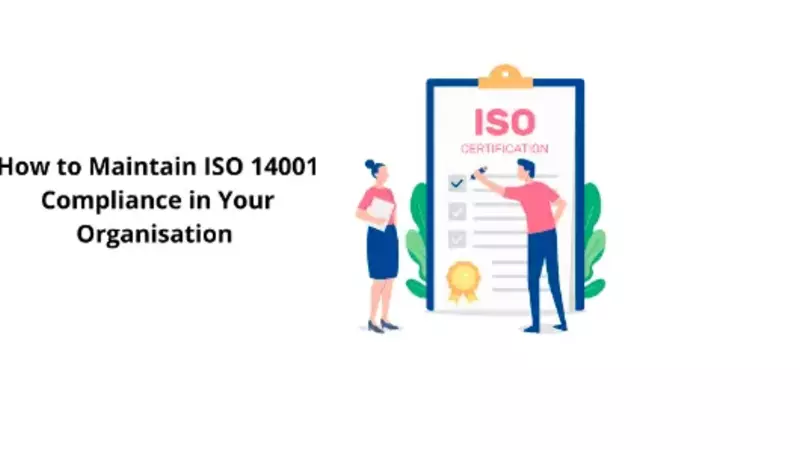Organizations are putting more of an emphasis on environmental responsibility and sustainability. For organizations looking to show their dedication to environmental management and compliance, following international standards like ISO 14001 has become essential. A widely accepted standard known as ISO 14001 establishes the foundation for an efficient Environmental Management System (EMS) and offers guidance to assist businesses in minimizing their environmental impact while preserving profitability.
The significance of ISO 14001 Compliance, its advantages, and the doable measures your organization can take to achieve and maintain conformity will all be covered in this blog. We will emphasize the significance of ISO 14001 Training in ensuring the successful implementation of an EMS and how it can foster a culture of environmental responsibility within your organization. We will emphasize the significance of ISO 14001 training in ensuring the successful implementation of an EMS and how it can foster a culture of environmental responsibility within your organization.
Understanding ISO 14001 Compliance
The International Organisation for Standardisation (ISO) created the widely accepted ISO 14001 standard. It is intended to help businesses create, put into practice, maintain, and enhance their environmental management systems. A systematic strategy for identifying, managing, monitoring, and controlling an organisation’s environmental impact across all its activities and processes must comply with ISO 14001 standards.
Organizations can gain several advantages by complying with ISO 14001, such as decreased environmental hazards, greater environmental performance, cost savings through resource efficiency, increased reputation, and access to new markets that value eco-friendly practices. Achieving ISO 14001 compliance shows a dedication to sustainable growth and establishes your organization as an environmentally conscious entity.
Importance of ISO 14001 Training
The staff must be well-versed in the standards’ guiding principles and requirements to successfully implement and maintain ISO 14001 compliance. Training in ISO 14001 is essential for equipping staff members at all levels with the knowledge and abilities they need to properly contribute to the EMS and understand their responsibilities for environmental management.
Employees are educated through training on the principles of ISO 14001, as well as the value of sustainable practices and how they affect the organization’s performance as a whole. It raises knowledge of the environmental implications and effects of their positions and activities, building an organization-wide culture of environmental stewardship.
Employees who have received thorough ISO 14001 training are better equipped to recognize possible environmental hazards, comprehend the need to comply with laws and regulations, and use best practices for sustainable resource management. It encourages employees to actively participate in eco-friendly projects and waste reduction efforts and develops a sense of ownership and accountability.
Additionally, ISO 14001 training fosters a collective attitude focused on environmental consciousness by aligning the workforce with the organization’s environmental objectives and goals, having a beneficial and measurable influence on the organization’s overall sustainability performance. Adopting this training increases the Environmental Management System’s basis, making it more strong and more adaptable to changes in the corporate environment. It also empowers employees.
Steps to Maintain ISO 14001 Compliance
Below are the steps to maintain ISO 14001 Compliance:
I) Senior Management Commitment
ISO 14001 compliance can only be attained and maintained with strong leadership commitment. The installation of an EMS should have the support of top management, and sufficient funding should be set aside to ensure its effective launch. Their participation sets the tone for the entire company and motivates staff to get involved in environmental projects.
ii) Environmental Review
Conduct a thorough environmental analysis of the operations, goods, and services of your company. Determine and evaluate the environmental effects and elements of each operational area. The development of objectives and targets to enhance environmental performance will be based on the findings of this evaluation.
iii) EMS Documentation
Create a thorough EMS that details the organization’s environmental policy, goals, practices, and obligations. The documentation must be understandable, available, and often updated to account for adjustments made to procedures or rules.
iv) Employee Training
Employees must get appropriate ISO 14001 training, as was already indicated. Provide them with instruction of the EMS, their responsibilities, and the importance of their contributions to environmental sustainability. Employees are more inclined to follow environmental regulations and procedures if they know their activities’ significance.
v) Implementing Operational Controls
Implement operational controls and procedures to manage and reduce the identified environmental consequences. Reducing the organization’s environmental impact may entail optimizing resource consumption, waste reduction, pollution avoidance, and other actions.
vi) Monitoring and Measurement
To assess the efficacy of your EMS, track and measure key performance indicators (KPIs) on a regular basis. You may find areas for improvement, make wise choices, and implement corrective measures as needed using this data-driven strategy.
vii) Internal Audits
Assess the EMS’s compliance with ISO 14001 regulations and your company’s internal policies by conducting internal audits. Prior to external certification checks, internal audits can assist find non-conformities and problem areas.
viii) Management Review
To assess the efficacy and performance of the EMS, conduct routine management reviews. Analyzing audit findings, monitoring target progress, and ensuring the EMS aligns with the organization’s strategic objectives are all parts of this review.
ix) Continual Improvement
Compliance with ISO 14001 is a continual process. Encourage an atmosphere where staff members actively look for methods to improve the organization’s environmental performance. Finding creative ideas and best practices might benefit from employee recommendations and feedback.
Conclusion
Maintaining ISO 14001, compliance offers businesses the chance to embrace sustainability and have a positive influence on the environment rather than merely checking a box. Your organization can improve its reputation, gain a competitive edge, and help create a more sustainable future by putting an emphasis on environmental management and making sure that it complies with ISO 14001 standards.
Effective ISO 14001 training for workers is a crucial part of this journey to empower people to understand their responsibilities in environmental management and promote a sense of responsibility towards sustainable practices. Your organization may effectively maintain ISO 14001 compliance and show its commitment to environmental stewardship through senior management involvement, appropriate documentation, internal audits, and continuous improvement.
